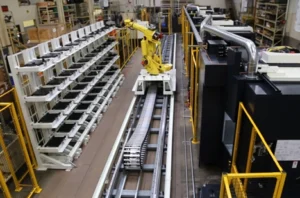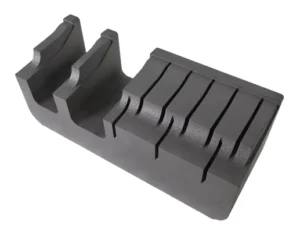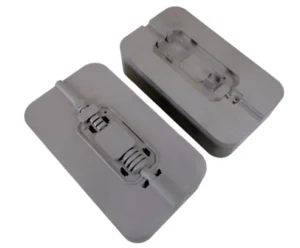By Ethan Rejto, director of marketing, Mantle
One of the greatest challenges facing the toolmaking industry is labor. With COVID-19 exposing how fragile the international supply chain is, more and more OEMs are hoping to reshore their manufacturing, with plastics processors reporting the highest percentage of their OEM customers attempting to reshore manufacturing in 18 years. 1 This shift to reshoring has increased demand, as plastics processors’ sales have seen year-after-year growth, with sales rising by an average of 15% per year since 2020. 1
To meet the increase in demand for molded parts comes an increase in demand for tooling. Tooling lead times have increased significantly with this demand, with 57% of processors reporting an increase in domestic tooling lead times and 41% reporting an increase for foreign tooling between 2020 and 2022. 1 In contrast, between 2017 and 2019, the same processors reported a 23% increase for domestic tooling and a 15% increase for foreign tooling. Perhaps even more concerning is that 80% of these processors report increased tooling costs for domestic providers and a 53% increase for foreign providers. When demand for a product increases and the product’s lead time and costs also increase, it implies a shortage in supply.

Since the 1980s, much of the toolmaking in the US moved to Asia. The low labor and raw materials cost made toolmaking overseas appealing compared to producing domestically. As tooling moved overseas, the number of tool shops in the US declined. Unsurprisingly, as the number of tool shops in the US decreased, so did the number of toolmakers as well as the number of individuals entering the profession. In fact, the number of toolmakers in the US has decreased by over 50% over the last 25 years. 2

One solution to addressing labor challenges in toolmaking is investing in automation technologies to do more with the labor available. Three examples of technologies that toolmakers are adopting include pick-and-place robotics systems, palletization and metal 3D printing.
Pick-and-place robotics systems have become far more accessible thanks to lower costs and easier-to-program robots – significantly lowering the barrier to entry. These robots offer the capability to automate various aspects of the toolmaking process; for example, an EDM cell that automatically swaps sinker EDM electrodes, allowing the machine to run lights out without needing manual intervention to change the electrodes.

Another option is to palletize workpieces, automatically allowing robotics to move pieces from machine to machine. These systems allow users to eliminate the impact of time lost due to part set-up and help reduce non-value-added costs by ensuring a consistent flow of parts, keeping the machines up and running. Additionally, palletization improves tolerances and part consistency since tools aren’t being refixtured when moved between machines. While set-up can be expensive and requires highly skilled labor, palletization combined with robotics dramatically can increase shop and machine efficiency.
One of the most efficient solutions to the labor shortage challenge is metal 3D printing. Metal 3D printing can automate mold insert fabrication with minimal user interaction and no toolmaker required. For example, Mantle’s metal 3D printing technology prints H13 tool inserts that are close to final after printing. Depending on the surface finish and tolerance required, printed inserts only require grinding to fit into the mold base and finish the ejector pin holes. This small amount of finishing is due to the company’s ability to print parts with a D2 surface finish comparable to sinker EDM and tolerances of ± 0.001″ per inch.
Since the printer operates autonomously during printing and requires only an hour of set-up, it reduces the amount of labor required to build a tool, allowing toolmakers to focus on other critical tasks, ultimately increasing shop throughput.

An example of this is a complex mold slide printed by General Pattern and used in a mold with no additional finishing. Printing saved the company 40 active toolmaker hours, which the toolmakers spent working on other critical tool shop activities.
In another case, Nicolet Plastics printed three complex inserts, effectively eliminating the need for any sinker EDM work that otherwise would have been required. The results were a decrease in calendar lead time from six weeks to two weeks and a reduction of toolmaking hands-on operations of 170 hours, from an estimated 180 hours traditionally to just 10 hours of finishing.
Westec Plastic Corporation, a custom injection and medical molder located in Livermore, California, invested in metal 3D printing recently to help deal with the company’s significant labor challenges. Westec uses metal printing technology to produce nearly finished inserts with virtually no hands-on processing. This enables Westec to reserve toolmakers’ limited time for only the most critical operations, such as tool finishing, repair and maintenance.

Tammy Baras, president of Westec, said, “Tooling is the base of our company. Without quality tooling, we can’t produce quality parts, but it’s getting harder and harder to find quality toolmakers. Using Mantle’s technology, we can complete up to 70% of the job and have our toolmakers handle the specialized steps that only a human can do. We need to take advantage of this new technology. With Mantle, we can provide our customers a service they can’t get anywhere else.”
When producing a set of inserts for one of the company’s medical device customers, Westec saved 30 active toolmaking hours by printing the inserts. The inserts only required 10 hours of final grinding and finishing of the ejector pins before molding.

In another example, Westminster Tool, a precision injection mold builder in Plainfield, Connecticut, saved over 110 active labor hours by printing a highly complex set of inserts with the company’s metal 3D printer. The inserts featured over 44 swipe-by shut-offs and were produced and molded in just four weeks for Westminster’s large medical device OEM customers to perform biocompatibility testing. Additionally, Westminster Tool was able to leverage the lessons learned from building the prototype tool to save 25% of the time and cost associated with designing the production tool.
The toolmaking industry is facing a transformative period as labor continues to be challenging, compelling shops to embrace new technologies not only for expansion but also to uphold their capacity. Pick-and-place robotics, palletization and metal 3D printing have emerged as early and effective solutions that tool shops readily are embracing. Leaning into this automation will be key to addressing the labor shortage crisis and ensuring sustained growth and efficiency within the industry.
Ethan Rejto is the director of marketing at Mantle, San Francisco, California, a metal 3D printing company that has developed technology for precision metal components such as tooling. Rejto has extensive experience in technical marketing for design and manufacturing products.
More information: www.mantle3d.com
References
- Manufacturers Association for Plastics Processors 2023 State of the Plastics Industry Report
- US Bureau of Labor Statistics, all employees, thousands, special die and tool, die set, jig, and fixture manufacturing, not seasonally adjusted


